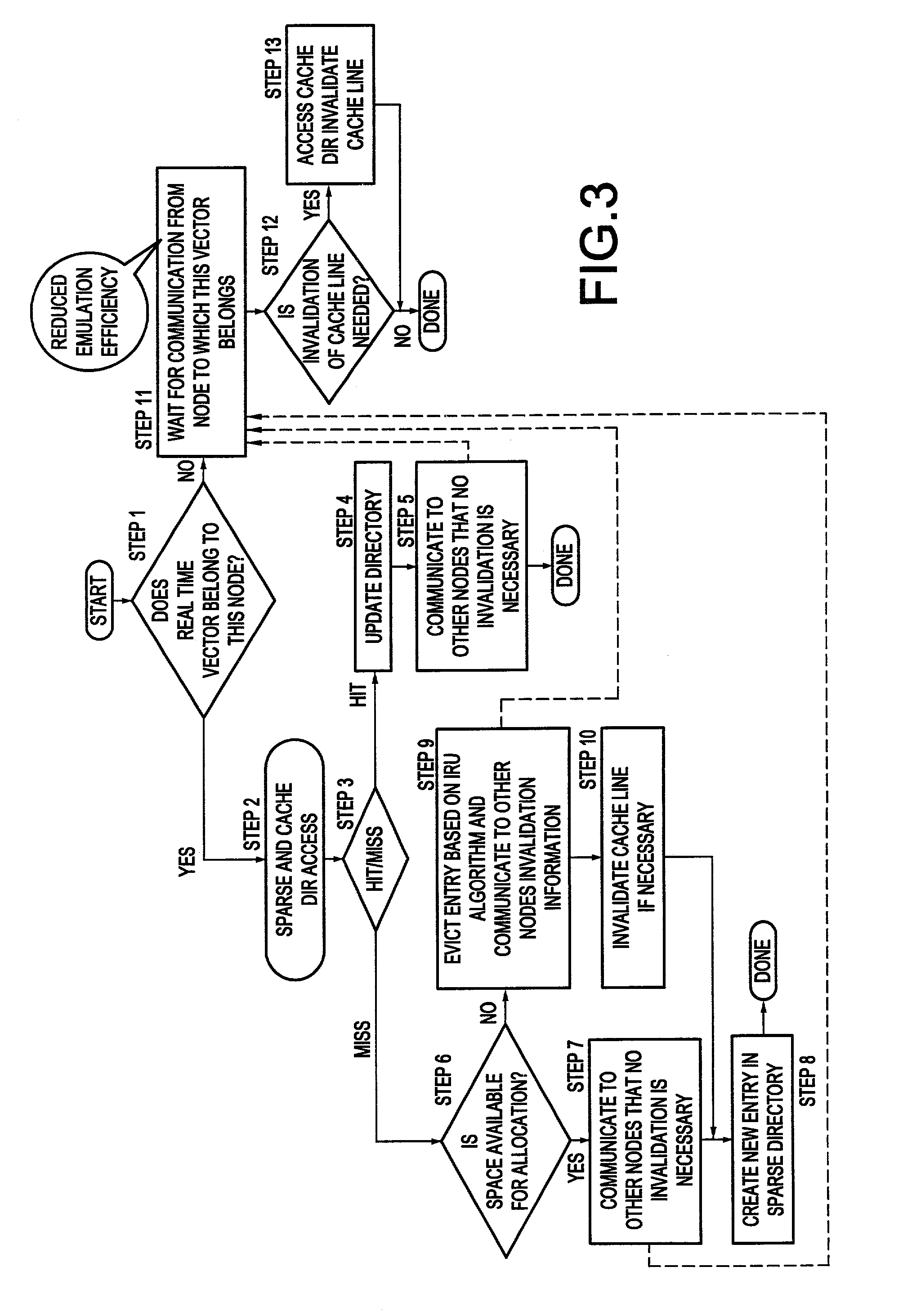Real time emulation of coherence directories using global sparse directories
a directory and global sparse technology, applied in the field of efficient real time emulation of coherence directories, can solve the problems of trace driven simulation unattractive, size cannot be easily changed after manufacture, and snoopy protocol cannot be used in large systems, so as to minimize communication, reduce the use of pins, and maximize the effect of emulation efficiency
- Summary
- Abstract
- Description
- Claims
- Application Information
AI Technical Summary
Benefits of technology
Problems solved by technology
Method used
Image
Examples
Embodiment Construction
[0017]Each node emulating a coherence directory (for example, sparse directory) in a distributed shared memory system is responsible for maintaining the cache directory of memory lines cached by the node as well as the sparse directory for maintaining the status of memory locations belonging to that node that may be in cache directories of other nodes. When an entry in the sparse directory is replaced, this information has to be propagated to all the nodes that share this cache line. In real time emulation in which requests arrive every cycle, this makes the pipeline for every transaction deep, thus consuming more area and pins and making it difficult to maintain throughput. Thus greatly reduces emulation efficiency.
[0018]To illustrate one example of real time emulation, assume that there is an “m” processor machine with each processor having its own level 1 and level 2 caches. Let the total addressable memory space be “M” bytes. It may be preferable to emulate an “n” node distribut...
PUM
 Login to View More
Login to View More Abstract
Description
Claims
Application Information
 Login to View More
Login to View More - R&D
- Intellectual Property
- Life Sciences
- Materials
- Tech Scout
- Unparalleled Data Quality
- Higher Quality Content
- 60% Fewer Hallucinations
Browse by: Latest US Patents, China's latest patents, Technical Efficacy Thesaurus, Application Domain, Technology Topic, Popular Technical Reports.
© 2025 PatSnap. All rights reserved.Legal|Privacy policy|Modern Slavery Act Transparency Statement|Sitemap|About US| Contact US: help@patsnap.com



